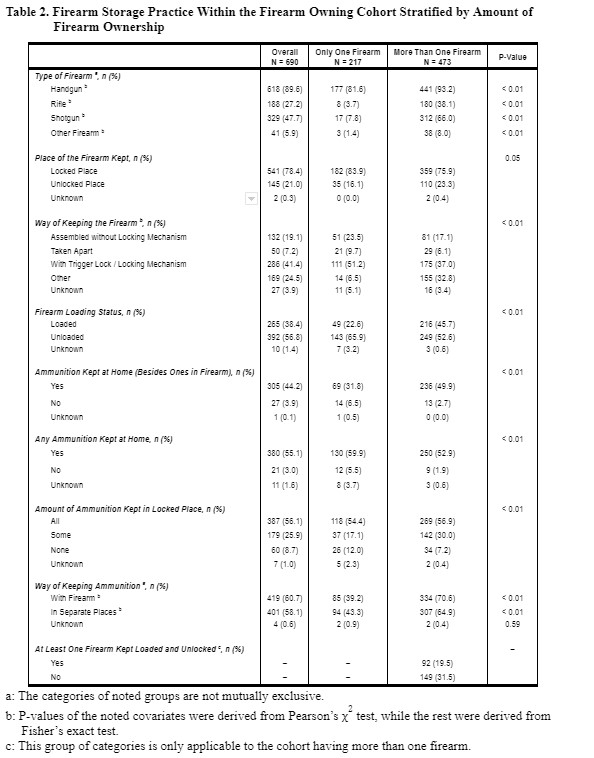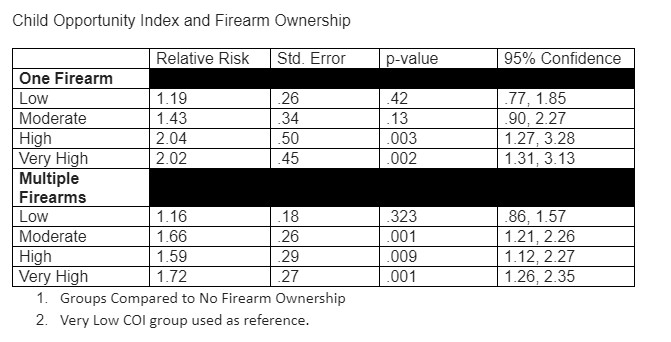Injury Prevention
Session: Injury Prevention 1
370 - Association of Childhood Opportunity Index and Firearm Ownership and Storage Practices Across Two Emergency Departments in Texas
Saturday, May 4, 2024
3:30 PM - 6:00 PM ET
Poster Number: 370
Publication Number: 370.1587
Publication Number: 370.1587

Timothy Wilson, MD (he/him/his)
Pediatric Emergency Medicine Fellow
Dell Children's Medical Center/UT Dell Medical School
Austin, Texas, United States
Presenting Author(s)
Background: Child Opportunity Index (COI) assesses neighborhood opportunity based on social determinants of health. While lower COI has been linked to more severe traumatic injuries and a higher rate of firearm related injuries, little is known about the relationship between COI and firearm ownership and storage practices. This study examines the relationship between COI and firearm ownership and storage practices.
Objective: To determine self-reported firearm ownership and storage patterns and their association with COI.
Design/Methods: We performed a convenience sample of surveys on families of pediatric patients visiting two geographically separate Level 1 emergency departments in Texas between November 2022 and October 2023. Participants self-reported demographic characteristics, and answered questions regarding gun ownership and storage patterns. We used descriptive statistics to analyze this data. Participant data was merged with the COI 2.0 dataset based on zip codes. The relationship between COI, firearm ownership, and storage characteristics were analyzed using logistic regression.
Results: 2882 total patient families participated in the survey. 690(23.9%) self-reported as firearm owners with 541(78.4%) reporting storing guns in a locked place and 392(56.8%) reporting keeping the firearm unloaded. As a patient's COI level increased, their relative risk of owning a firearm significantly increased in each successive quintile (Very High COI RR 1.81, p < 0.001). This held true for both single firearm families (Very High COI RR 2.02, p =0.002) and those that owned multiple firearms (Very High COI RR 1.72, p =0.001). Children in the Very Low (692) to Low COI (750) quintiles composed over half of the respondents to the survey (50.4%). There was no significant difference in storage practices between COI quintiles.
Conclusion(s): As a patient’s COI increased the risk of owning one or more firearms increased, although storage patterns did not differ across quintiles.To mitigate the rising rate of pediatric firearm related injuries and mortality, future work should focus on developing tailored approaches for secure storage across demographic groups.



